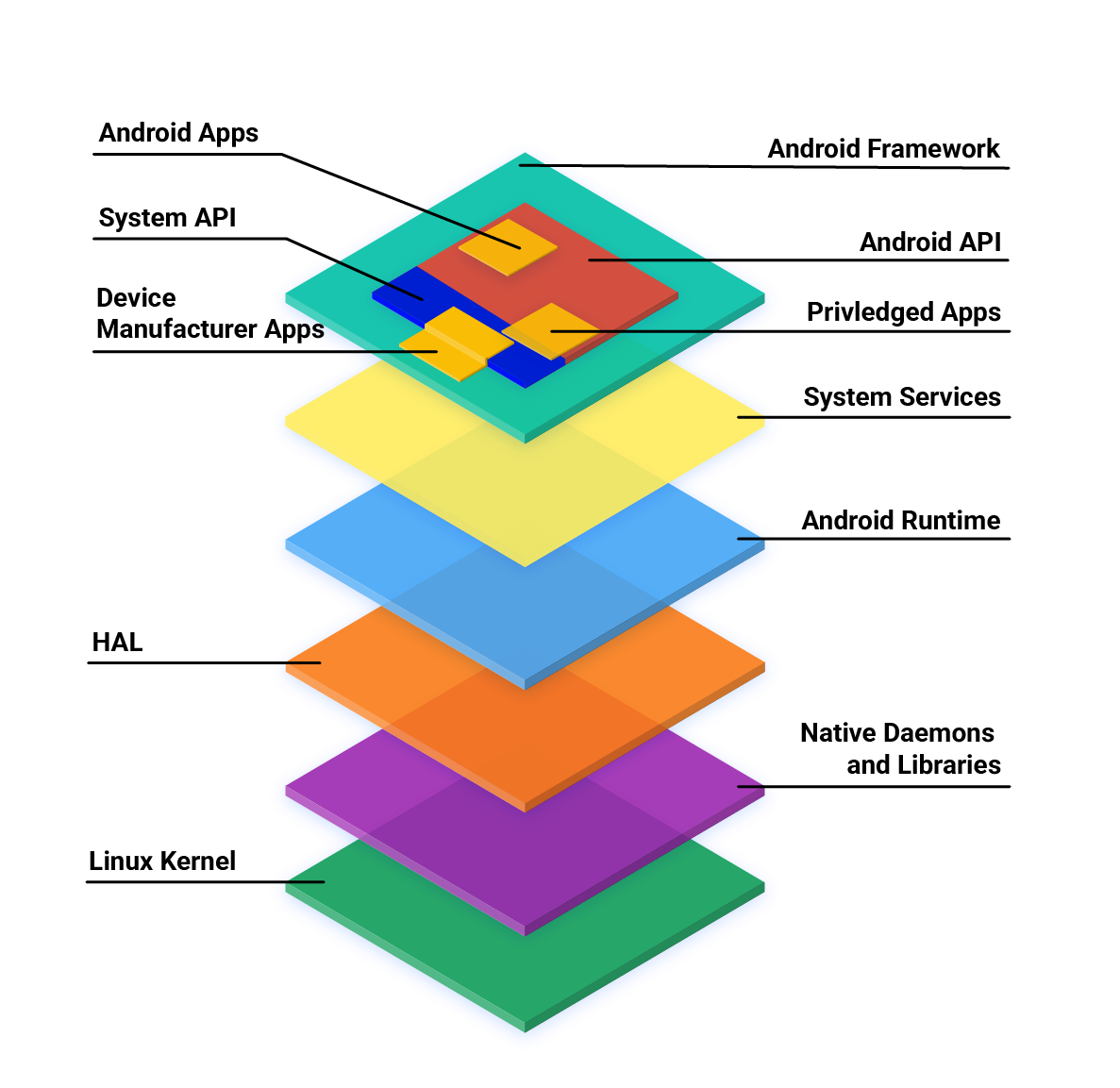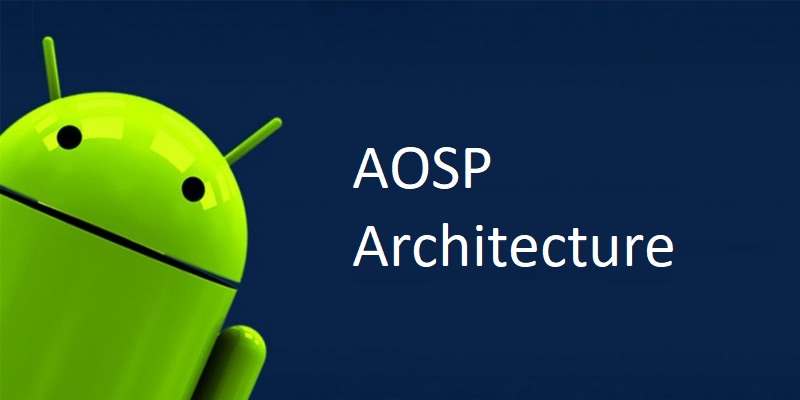AOSP Architecture
Android supply code for the Android Open System Platform (AOSP) is out there to the overall public and editable.For their personal device, every body can down load and regulate AOSP.
The Android cellphone platform is absolutely and completely carried out via way of means of AOSP.
Devices implementing AOSP can be compatible on either the AOSP level or the Android level.
The Compatibility Definition Document's list of specifications must be followed by an AOSP-compatible device (CDD).
The Vendor Software Requirements (VSR), the Vendor Test Suite (VTS), and the Compatibility Test Suite tests, among other specifications, must be met by an Android-compatible device in order to be considered compliant (CTS).
See the Android compatibility programme for further details on Android compatibility.
AOSP architecture have following con layers contains

Android App:
Apps built using only Android APIs from the Android SDK. The Google Play Store is often used to find and download Android apps, but there are many other alternatives. In some cases, device manufacturers may wish to pre-install Android apps to support core device functionality. If you're interested in developing Android apps click here.
Privileged App:
Apps built using a combination of Android and system APIs. These apps should be pre-installed on the device as privileged apps.
Device Manufacture App:
Apps built using a combination of Android APIs, system APIs, and direct access to Android framework implementations. Because device manufacturers may directly access unstable APIs within the Android framework, these apps must be pre-installed on the device and can only be updated by updating the device's system software.
Android Framework:
A set of Java classes, interfaces, and other precompiled code used to build an app. Portions of the framework are exposed using the Android APIs in the Android SDK. Other parts of the framework are only available to OEMs through the Android SDK system APIs. Android framework code that runs inside your app's process.
Android SDK:
A software development kit for building apps that interact with the Android framework. The Android SDK consists of Android APIs that are available to all apps and system APIs that are available only to privileged apps. For more information about Android APIs in the Android SDK, see developer.android.com. There is also an Android Native Development Kit (NDK) that you can use to create parts of your Android app using native code.
Syestem Services:
System services are modular centralized components such as system_server, SurfaceFlinger, and MediaService. Functionality provided by the Android Framework APIs communicates with system services to access the underlying hardware.
Android RunTime(ART):
Java application execution environment provided by AOSP. ART translates the application's bytecode into processor-specific instructions that are executed by the device's runtime environment.
Hardware Abstraction Layer (HAL):
A HAL is an abstraction layer with standard interfaces that hardware vendors can implement. HALs allow Android to be independent of lower-level driver implementations. A HAL allows you to implement functionality without affecting or changing the override system.
Native daemons and libraries:
In this layer, there are native daemons like init, healthd, logd, and storaged.These daemons do not rely on a userspace-based HAL implementation and interact directly with the kernel or other interfaces.This layer contains libc, liblog, libutils, libbinder, and libselinux native libraries.These Native libraries do not rely on a userspace-based HAL implementation and interact directly with the kernel or other interfaces.
Kernel:
As the central part of the operating system, the kernel communicates with the underlying hardware on your device. Where possible, the AOSP kernel is split into hardware-independent and vendor-specific modules. Description of AOSP kernel components (including definitions)
Note: If you feel this is helpfull for you then please share it to your friend's circle and groups. It will help me to write such a amazing bloags again and again.
Thank you !!!
Popular posts

